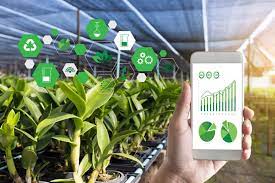Introduction
The Internet of Things (IoT) is playing a pivotal role in reshaping the landscape of environmental conservation. By leveraging connected devices, sensors, and data analytics, IoT technologies offer innovative solutions to monitor, manage, and safeguard the natural world. This article explores the profound impact of the Internet of Things in environmental conservation, shedding light on key applications, benefits, and considerations for sustainable practices.
Remote Sensing and Biodiversity Monitoring
One of the primary applications of IoT in environmental conservation is remote sensing for biodiversity monitoring. Connected sensors placed in remote or difficult-to-reach areas can collect data on wildlife movements, habitat conditions, and even detect the presence of endangered species. This real-time information aids conservationists in making informed decisions to protect and preserve biodiversity.
Smart Agriculture for Sustainable Practices
In the realm of agriculture, IoT technologies are fostering smart and sustainable farming practices. Connected sensors embedded in the soil can monitor moisture levels, nutrient content, and crop health. This data enables precision agriculture, where farmers can optimize resource usage, reduce water consumption, and minimize environmental impact while maximizing crop yields.
Wildlife Tracking and Anti-Poaching Efforts
IoT-enabled tracking devices are instrumental in wildlife conservation efforts. Animals equipped with GPS-enabled collars or tags can be monitored in real time, helping researchers understand migration patterns, behavior, and potential threats. Moreover, IoT plays a crucial role in anti-poaching initiatives by providing real-time alerts and tracking unauthorized activities in protected areas.
Water Quality Monitoring
Maintaining the quality of water bodies is critical for environmental health. IoT sensors deployed in rivers, lakes, and oceans can continuously monitor water quality parameters such as temperature, pH levels, and pollutant concentrations. This data aids conservationists and authorities in identifying pollution sources, implementing remediation measures, and ensuring the preservation of aquatic ecosystems.
Fire Detection and Prevention
Forest fires pose a significant threat to biodiversity and natural habitats. IoT technologies, including sensors and drones, enhance early detection of forest fires. Connected devices can monitor temperature, humidity, and smoke levels, providing real-time data to authorities. This timely information enables swift response and effective firefighting strategies, reducing the impact of wildfires on ecosystems.
Sustainable Fisheries Management
Overfishing and illegal fishing practices threaten marine ecosystems. IoT solutions are employed to monitor and manage fisheries sustainably. Connected devices, such as smart buoys and underwater sensors, track fish populations, monitor fishing activities, and enforce fishing regulations. This data-driven approach contributes to the conservation of marine biodiversity and the long-term health of fisheries.
Waste Management and Recycling Optimization
IoT technologies play a role in optimizing waste management processes. Smart waste bins equipped with sensors can monitor fill levels, enabling efficient collection routes and reducing the environmental impact of transportation. Additionally, IoT contributes to recycling efforts by tracking the disposal and recycling of materials, fostering a more circular and sustainable approach to waste management.
Climate Monitoring and Adaptation
Monitoring climate parameters is crucial for understanding and addressing climate change impacts. IoT sensors placed in various environments collect data on temperature, humidity, and greenhouse gas concentrations. This information aids in climate modeling, adaptation planning, and the development of strategies to mitigate the effects of climate change on ecosystems.
Data Security and Ecosystem Impact
While IoT offers numerous benefits for environmental conservation, challenges exist. Data security is a significant concern, especially when dealing with sensitive environmental data. Ensuring secure and encrypted transmission of information is crucial to prevent unauthorized access and potential misuse. Additionally, careful consideration must be given to the ecological impact of deploying IoT devices to ensure that they do not inadvertently harm the very ecosystems they aim to protect.
Future Trends: AI Integration and Ecosystem Resilience
The future of IoT in environmental conservation involves the integration of artificial intelligence (AI) for more advanced data analysis and decision-making. AI algorithms can process vast amounts of data from IoT devices, identify patterns, and provide insights that enhance conservation strategies. Furthermore, future developments may focus on building ecosystem resilience by leveraging IoT to monitor and respond to environmental changes in real time.
Conclusion
The Internet of Things is proving to be a transformative force in the field of environmental conservation. By providing real-time data, enabling precision monitoring, and fostering sustainable practices, IoT technologies contribute to the protection and preservation of our planet’s diverse ecosystems. As the integration of IoT in conservation efforts continues to evolve, it holds the potential to revolutionize our approach to environmental sustainability and ensure a harmonious coexistence between human activities and the natural world.
